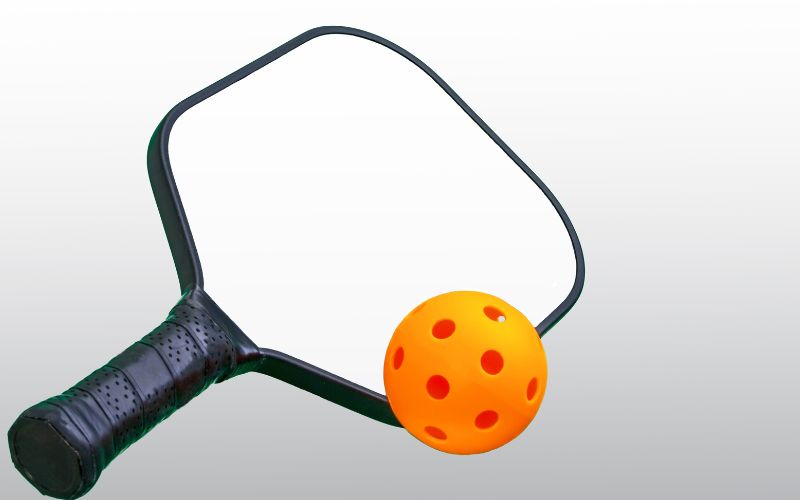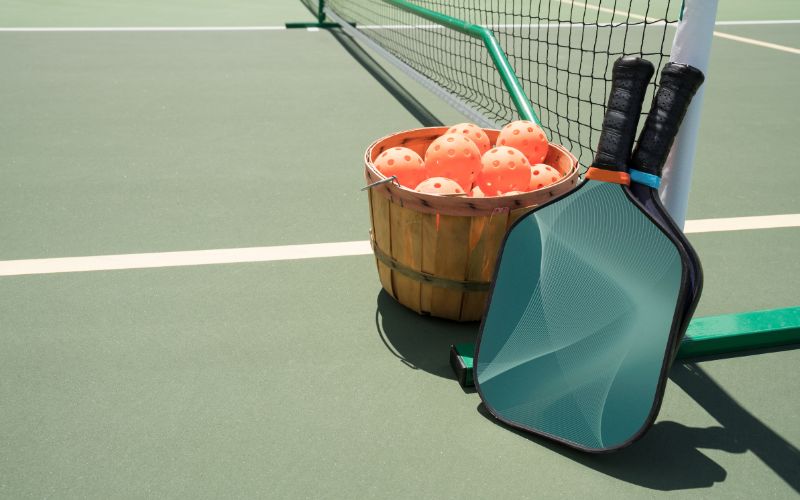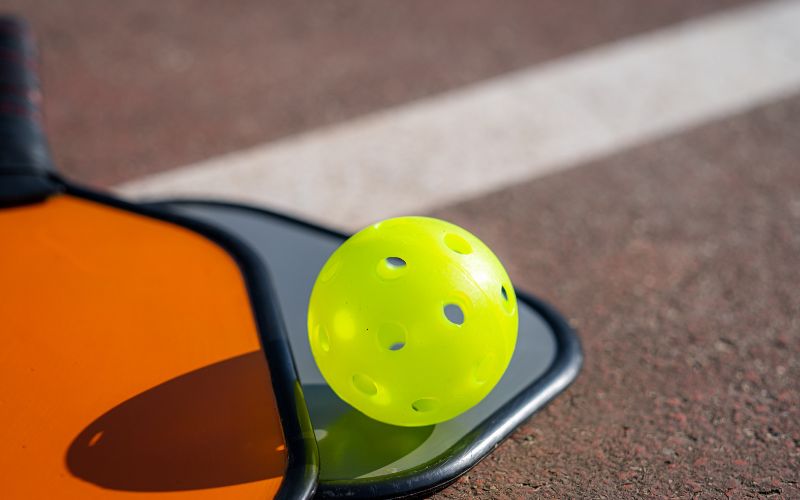Pickleball is a sport that has been rapidly gaining popularity, and with its rise, the demand for the best pickleball paddles has surged. Your pickleball paddles are an extension of your arm on the court, a crucial tool that can significantly impact your performance. With a multitude of options available, finding the ideal pickleball paddle to suit your needs is essential. In this comprehensive guide, we will delve into the intricacies of choosing the perfect paddle. From core materials to weight, we’ve got you covered.
Selecting the Ideal Pickleball Paddle for Your Needs
The right pickleball paddle can make a world of difference in your game. To ensure you make the best choice, it’s important to consider various factors:
1. Core Material and Thickness
The core of your paddle plays a pivotal role in how it performs. Common core materials include polymer, aluminum, Nomex, and, more recently, carbon fiber. Each material has its unique characteristics, affecting the paddle’s feel and power. The thickness of the core also impacts the overall weight and maneuverability of the paddle. When choosing a paddle, consider your skill level and personal preferences. For instance, a thicker core might offer more power, while a thinner core can provide better control.
A pickleball paddle core is the foundational component of the paddle, which serves as the primary structure determining its performance characteristics. Essentially, it’s the heart of the paddle. Understanding the core is crucial in selecting the best paddle that aligns with your playing style and needs.
What Materials Are the Great Paddle Cores Made of?
Pickleball paddle cores are typically constructed from a variety of materials, each offering distinct advantages and characteristics. Here are some of the most common materials used for paddle cores:
- Polymer: Polymer cores are known for their soft and dampened feel. These cores absorb impact and reduce vibrations, providing enhanced control. They are ideal for players who prioritize finesse shots and ball placement.
- Nomex: Nomex cores are stiffer and more rigid, offering excellent power and durability. These cores transmit energy efficiently, resulting in harder and faster shots. They are favored by players who prefer aggressive play styles.
- Aluminum: Aluminum cores are lightweight and provide a good balance between power and control. They are often found in composite paddle cores, combining the benefits of various materials.
- Carbon Fiber: Carbon fiber cores are relatively newer to the scene. They offer a unique blend of power and control. These cores are lightweight and provide excellent feedback to the player. Many consider them to be a versatile choice.
- Wood: Some traditional paddles have wooden cores. These cores offer a classic feel and are often heavier compared to other materials. They are still preferred by some players for their unique touch and response.
Why Paddle Core Materials Matter
The choice of paddle core material significantly influences how a paddle performs on the court. Here’s why it matters:
- Power vs. Control: Different core materials offer varying levels of power and control. Stiffer cores like Nomex and aluminum tend to provide more power, making them suitable for players who rely on hard-hitting shots. Softer cores like polymer are favored for control, enabling precise ball placement.
- Feel and Feedback: The core material impacts the feel of the paddle. Carbon fiber cores, for example, provide a more direct and responsive feel, while polymer cores are dampened and reduce vibrations, offering a softer touch.
- Vibration Dampening: If you have issues with arm discomfort or want to minimize vibrations, the core material plays a significant role. Polymer cores are excellent for reducing vibration, enhancing comfort during play.
- Durability: Paddle core materials also affect the paddle’s durability. Nomex and aluminum cores are known for their robustness and longevity, making them great choices for players who want their paddles to withstand rigorous use.
- Weight Distribution: The core material can impact the weight distribution of the paddle. For instance, aluminum cores tend to be lightweight, which can contribute to maneuverability. Heavier cores, like wood, can alter the balance of the paddle, influencing your playing experience.
2. Paddle Surface Material
The surface material can be made of materials like graphite, fiberglass, or composite materials. Each of these materials has its own advantages in terms of durability, power, and ball control. For example, graphite paddles tend to offer more control, while fiberglass ones provide added power. Your choice will depend on your playing style and priorities.
The Role of Material in Pickleball Paddles
The material used in the construction of pickleball paddles is a critical determinant of their on-court performance. The choice of material significantly influences how a paddle feels in your hand, how it responds to your shots, and ultimately, your overall game experience. Let’s delve deeper into some common materials used in pickleball paddles and the specific advantages they offer:
Graphite
Ball Control
Graphite paddles are renowned for their exceptional ball control. They offer a level of finesse and precision that’s well-suited for players who rely on their touch and accuracy. When you need to place the ball with pinpoint control, a graphite paddle can be your best friend.
Softer Feel
Graphite paddles tend to provide a softer and more forgiving feel. This is especially beneficial for players who want to minimize the impact on their arm and reduce the risk of discomfort during play.
Fiberglass
Added Power
Fiberglass paddles are preferred for their extra power. The surface material made of fiberglass generates excellent “pop” when striking the ball, making them a solid choice for players who adopt an aggressive and offensive playing style. If you aim to add more speed to your shots, a fiberglass paddle can help you achieve that.
Durability
The durability of fiberglass paddles is a significant advantage. These paddles can withstand rigorous play, making them a go-to option for players who want their equipment to last longer and endure intense matches.
Composite Materials
Balanced Performance
Composite paddles combine various materials in their construction to offer a well-rounded performance. They are designed to strike a balance between power and control, appealing to a broad range of players. If you’re a player who doesn’t want to be limited to a single aspect of the game, composite paddles provide versatility.
Versatility
Due to their combination of materials, composite paddles often cater to different playing styles. They allow players to adapt to the evolving demands of the game, offering the best of both worlds by providing the power required for offensive shots and the control necessary for finesse plays.
3. Paddle Design
Paddle design includes aspects like the shape, size, and the presence of certain technologies. Paddle shapes vary from the classic to more innovative designs. The shape can affect the distribution of weight and the sweet spot size. Some paddles come with specialized features to enhance spin, control, or power, so it’s essential to understand how these design elements impact your game.
4. Handle Length
The handle length of a paddle can impact your grip and overall playing comfort. A longer handle might provide more reach but could affect maneuverability, whereas a shorter handle can give you better control and agility. The choice of handle length often depends on personal preference and playing style.
5. Paddle Weight
Paddle weight is a critical factor in your performance. Paddles can be categorized as lightweight, midweight, or heavyweight. Lightweight paddles are easier to maneuver and reduce fatigue during long matches, while heavyweight paddles offer more power. Your choice will depend on your playing style and fitness level.
When shopping for pickleball paddles, keep these factors in mind, and consider how each one aligns with your playing preferences.
Where Control Meets Power
One of the most crucial aspects of a pickleball paddle is the size of its sweet spot. The sweet spot is the area on the paddle’s face where you can make effective shots with optimal control and power. A larger sweet spot allows for more forgiveness and can help reduce mishits.
Players who are new to the game or want better ball control often opt for paddles with larger sweet spots. For those looking for more power, paddles with slightly smaller sweet spots are a better fit.
Lightweight Pickleball Paddles: A Winning Choice
When considering pickleball paddle options, don’t underestimate the benefits of a lightweight paddle. Lightweight paddles are favored by players who want to maintain excellent maneuverability, minimize fatigue during extended matches, and enjoy quicker reactions on the court. They offer an ideal blend of control and power, making them a great choice for a wide range of players.
In the world of pickleball, your choice of paddle can be a game-changer. It’s not just about finding the best pickleball paddle; it’s about selecting the one that aligns perfectly with your playing style, skill level, and personal preferences.
Don’t be afraid to try different options, experiment with various materials and designs, and consider your sweet spot size and paddle weight. The right paddle can significantly enhance your game and lead you to pickleball victory.
Remember, pickleball is not just a sport; it’s a lifestyle. Embrace the power, control, and spin with the perfect good paddle that suits your game. The court is yours; dominate it with the best pickleball paddle in hand!
Frequently asked questions (FAQs)
Why is selecting the right pickleball paddle so important?
Your pickleball paddle is more than just equipment; it’s an extension of your playing style and can significantly affect your performance on the court. Choosing the right paddle can make a world of difference in your game.
How do I determine the ideal core material for my pickleball paddle?
The choice of core material should align with your playing style and preferences. Stiffer cores like Nomex and aluminum offer greater power, while softer cores like polymer are great for control and comfort.
What’s the significance of the paddle material in a pickleball paddle?
The paddle face material impacts ball control, power, and durability. For instance, graphite paddles provide excellent control, while fiberglass paddles offer added power. Your choice should match your playing style.
How can I find the perfect balance between power and control in my pickleball paddle?
Finding the right balance depends on factors such as core material, paddle face material, and paddle weight. It’s crucial to consider these elements collectively to achieve the desired balance.
Why should I pay attention to the sweet spot size and paddle weight?
The sweet spot size influences your ability to make effective shots, while paddle weight affects maneuverability and fatigue during play. The right combination of these factors ensures an ideal playing experience.







